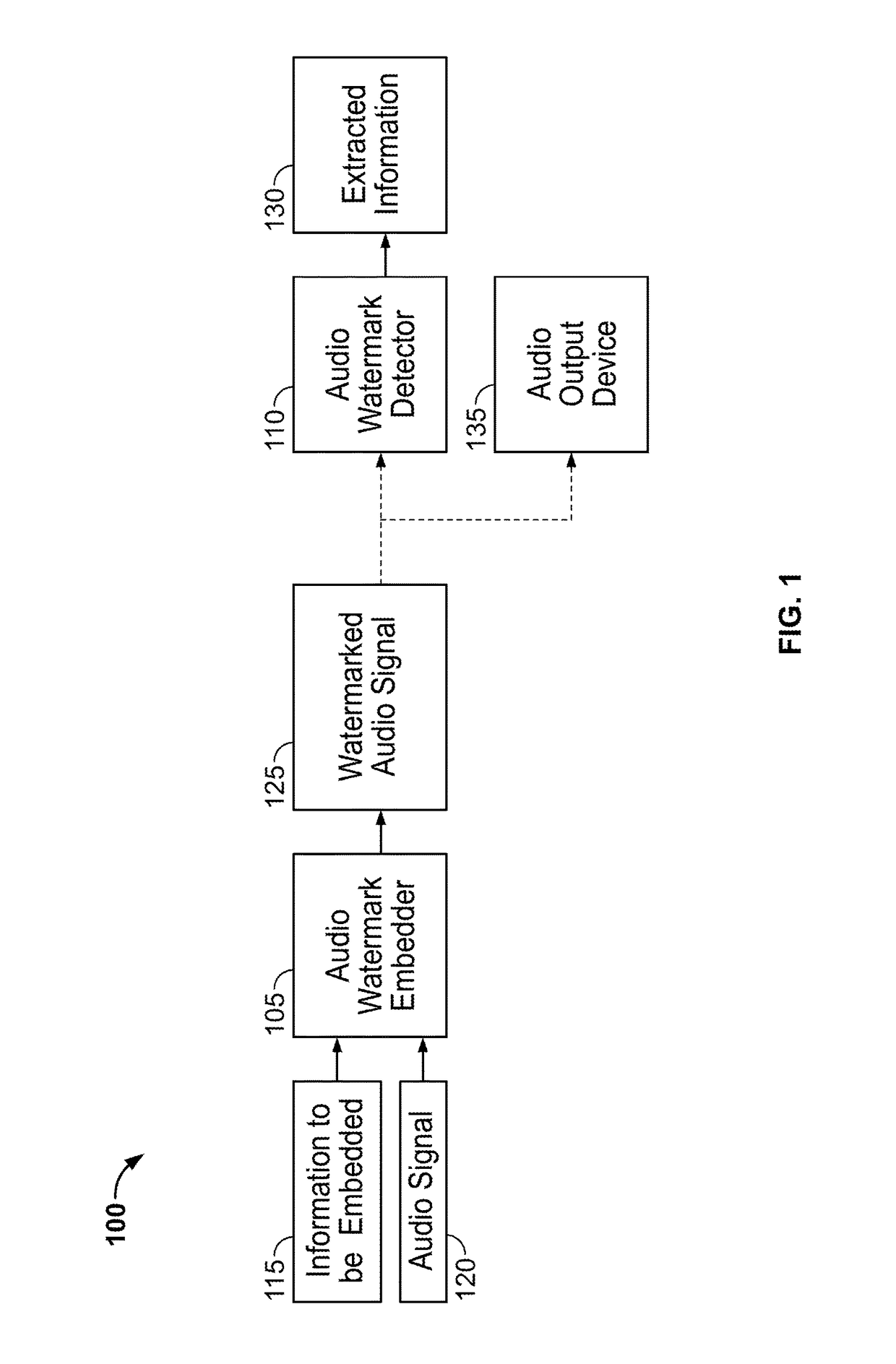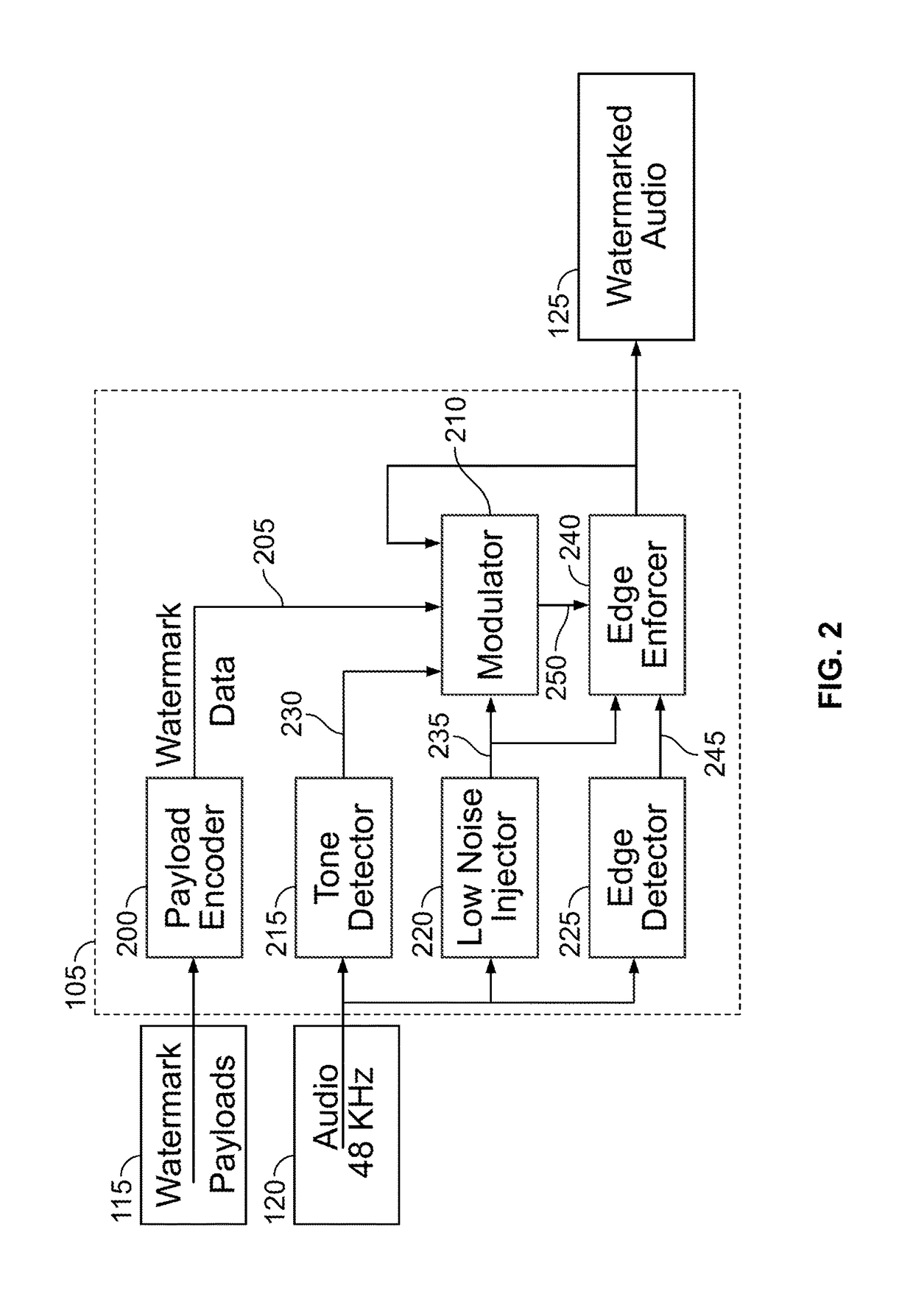Audio watermarking via phase modification
a phase modification and audio technology, applied in the field of using watermarking, can solve the problems of reducing the ability of the decoder to reliably extract data, reducing the level of modulating signal, and typically perceived noise in the modulating sequence, so as to reduce the information error rate
- Summary
- Abstract
- Description
- Claims
- Application Information
AI Technical Summary
Benefits of technology
Problems solved by technology
Method used
Image
Examples
Embodiment Construction
[0052]Referring to FIG. 1, an audio watermarking system 100 includes an audio watermark embedder 105 and an audio watermark detector 110. The audio watermark embedder 105 receives information 115 to be embedded and an audio signal 120, and produces a watermarked audio signal 125. Both the audio signal 120 and the watermarked audio signal may be analog audio signals that are compatible with low fidelity transmission systems.
[0053]The audio watermark detector 110 receives the watermarked audio signal 125 and extracts information 130 that matches the information 115. An audio output device 135, such as a speaker, also receives the watermarked audio signal 125 and produces sounds corresponding to the audio signal 120.
[0054]The audio watermarking system 100 may be employed in a wide variety of implementations. For example, the audio watermark embedder 105 may be included in a radio handset, with the information 115 being, for example, the location of the handset, the conditions (e.g., te...
PUM
 Login to View More
Login to View More Abstract
Description
Claims
Application Information
 Login to View More
Login to View More - R&D
- Intellectual Property
- Life Sciences
- Materials
- Tech Scout
- Unparalleled Data Quality
- Higher Quality Content
- 60% Fewer Hallucinations
Browse by: Latest US Patents, China's latest patents, Technical Efficacy Thesaurus, Application Domain, Technology Topic, Popular Technical Reports.
© 2025 PatSnap. All rights reserved.Legal|Privacy policy|Modern Slavery Act Transparency Statement|Sitemap|About US| Contact US: help@patsnap.com



